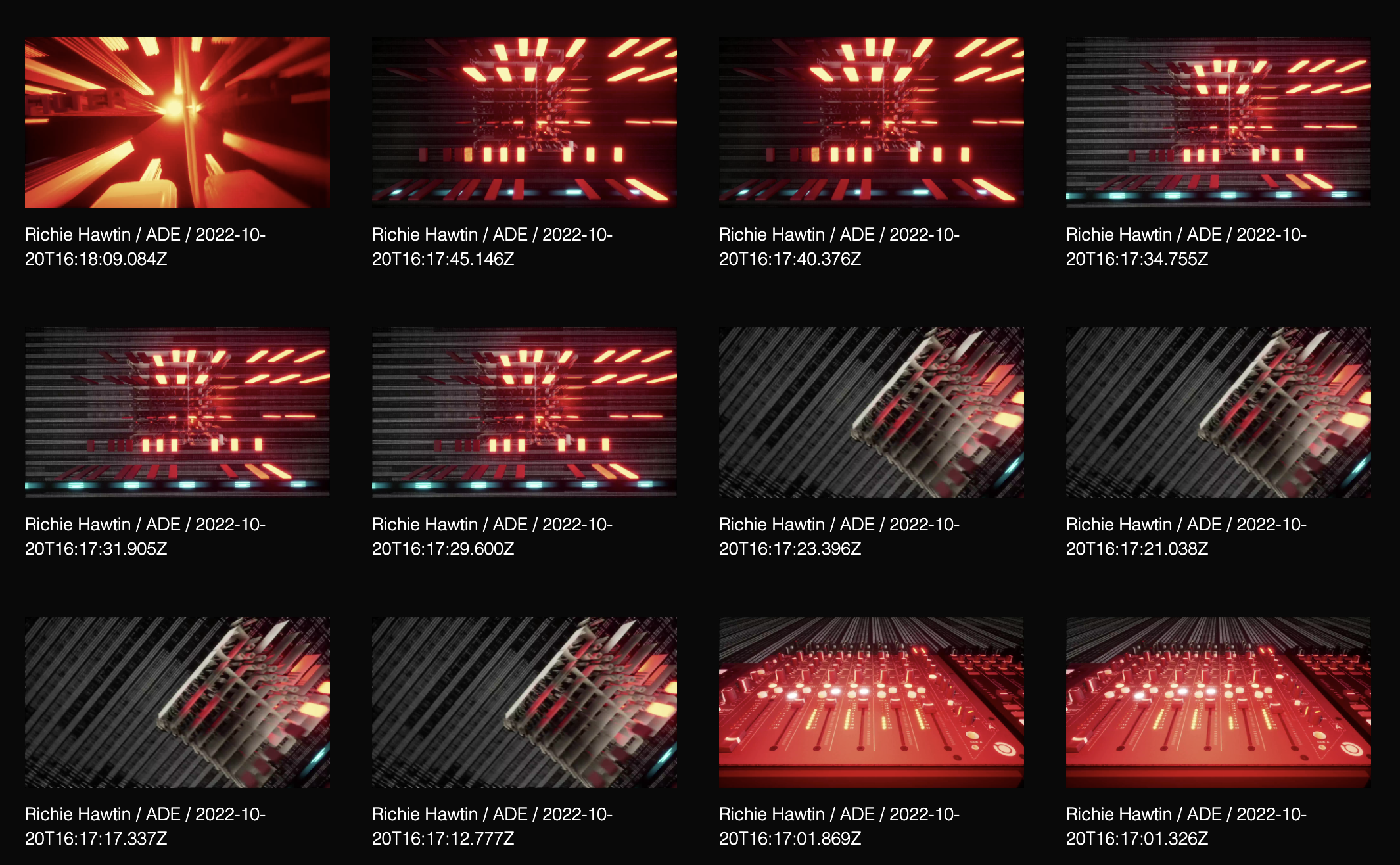The Lab Report 10 - Nike, Richie Hawtin and NFT Critics

Well, what a few weeks it's been.
By now, you're surely familiar with the FTX saga and the massive ripple effects cascading throughout the entire crypto ecosystem. No need re-hash the details here, they've been endlessly discussed elsewhere.
What I will say is that despite the turmoil, builders will keep building. Those who see the potential of decentralized technology will keep chipping away, and as the dust settles, grifters and opportunists will leave, giving more opportunity for web3 to realize its potential. Now, onto more important things.
First, I was pleased to see that OpenSea reversed course on creator royalties, announcing they would continue enforcing them. Competitors Blur and X2Y2 were quick to follow suit. Big win for artists and creators.
I also wanted to highlight Richie Hawtin's recently unveiled "proof-of-performance" NFT minting technology. The approach is truly impressive.
Last month at ADE, the Techno icon unveiled a new way for fans to mint "digital memories" during shows. Hawtin's system involves a MIDI data feed pulling directly from his Model-1 DJ Mixer to create and visualize NFTs using the live performance itself as the starting point for creation. When someone chooses to mint a moment from his set, his system queries the music to determine which tracks are playing.
From there, a visualization is generated and a new NFT is minted. The smart contract is even set up to allocate a share of the sale to each of the artists involved: the DJ, the artist whose track is played, and even a secondary artist whose track might be getting mixed in at that very moment. Pretty groundbreaking stuff.
You can watch the full presentation here.
More stories below. See you all in a few weeks.
And if you're in the US, hope you have a great Thanksgiving.

Artist/Platform News
- Richie Hawtin Unveils His Live "Proof-of-Performance" NFT Minting Technology at ADE
- Santigold Launches Web3 Fan Club via Medallion After Canceled Tour
- Nike Launches .Swoosh Web3 Platform, With Polygon NFTs Due in 2023
- 3LAU Accused of Not Paying Songwriter Her Fair Share From Massive ‘Ultraviolet’ NFT Auction
- OpenSea Changes Course on Creator Royalties, Will Enforce Them
- NFT Remix Platform Heds Raises $2.5M to Foster Collaborative Curation.

Deeper Dives
How UMG is Building Out Its Bored Ape Metaverse Band, Kingship | Decrypt
- Decrypt has a good in-depth overview of UMG's NFT avatar band Kingship and where the label is hoping to take the project.
- Led by 10:22PM founder Celine Joshua, Kingship launched a few months ago with a set of key cards giving access to the "world of Kingship" aka music, exclusive content, utility, community, and token-gated experiences.
- After launching a partnership with M&Ms, the project is now unveiling a new character named Kurt the Roadie. An NFT profile picture (PFP) of the pink flamingo Kurt is being airdropped to all project holders.
- The character will play a functional role in the 3D metaverse game being developed by 10:22PM. This game is part of the label's mission of developing building immersive, interactive experiences for music fans using transmedia storytelling.
Is The Cultural Economy Next? | Creative Destruction
- Thomas Klaffke, who writes at Creative Destruction, has a good article synthesizing a few different pieces that relate to a general shift in perspective around culture as a product and community-based creation.
- He references Toby Shorin's Life After Lifestyle and Kickstarter co-founder Yancey Strickler's new venture Metalabel.
- The argument formulated by Shorin is essentially this: we are transitioning "from an era where brands are designed to sell products to an era where brands are designed to be culture.”
- Or in other words, "The culture is now the product."
- Strickler expands the argument by adding a collective dimension. It's no longer simply about individual creators, but community-based creation through metalabels. It's a shift from single-player to multiplayer.
- The Creator Economy is creativity in single-player mode: every creator competing against everyone else for followers and attention.
- A metalabel is creativity in multiplayer mode: groups of people pooling skills, audiences, and resources in support of a larger creative vision or purpose.
Are Artists Being Used As Cannon Fodder in the NFT Game? | Music Business Worldwide
- This is a more critical article than the usual positive news we highlight in this newsletter. I'm sharing it for a few reasons. First, it's from a fairly important voice in the music industry. The author is Mark Douglas, Chief Information Officer at PPL - a collective rights society in responsible for licensing public performance and broadcast of recordings in the UK.
- Second, on the surface the argument seems to be better developed than what we usually see from critics, so I think it's worth at least recognizing that.
- Douglas focuses his critique on the technical side of NFTs, mostly ignoring the fan engagement and revenue potential of the technology.
- He rightfully argues that there is technology risk in this space, that there is an over-reliance on hyperbole and marketing, and that many artists and fans don't always quite know what they're getting into. Most people in web3 would agree with all of this.
- Yet none of these critiques form an actual argument against NFTs themselves. Douglas makes the unfortunate mistake that many critics make: he distorts the opposing view, recycling clichés and arguing against the worst players, while ignoring many well-known facts that rebut his position.
- There's the classic "gas fees are too high" argument which ignores recent return to healthier fees, the high costs inherent to any new technology and the dozens of competing of blockchains with lower transaction fees.
- There's the "digital assets can be copied" argument which ignores the social dynamics that underpin cultural products and the importance of legitimacy as a tool for determining value.
- There's the "middlemen still exist in crypto" argument which ignores the fact that OpenSea's take rate is 2.5% vs 50% for Twitch or 30% for Apple. Or the fact that low-cost minting tools mean creators can forgo platforms entirely.
- I'll leave it at that for now. I may write a longer rebuttal as I think it's important to engage with critics, but for now I'm sharing this piece as an example of what a seemingly smart but off-the-mark argument looks like.

